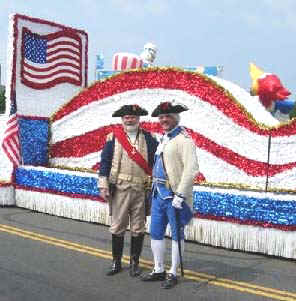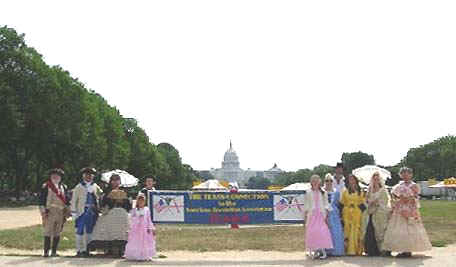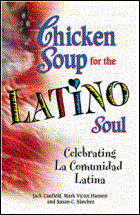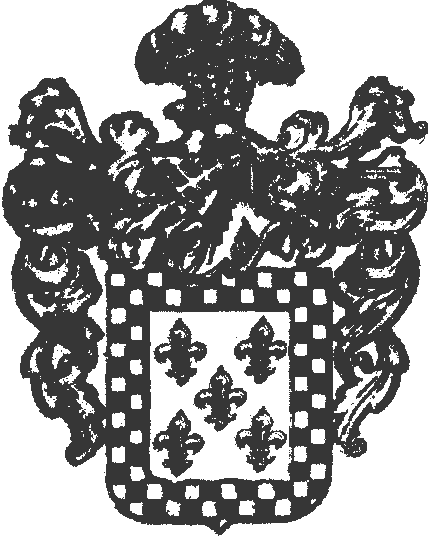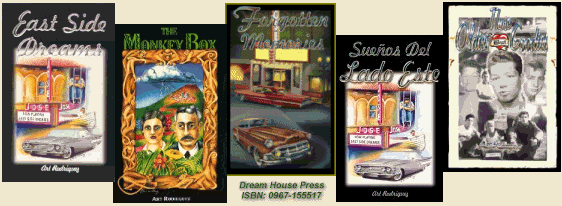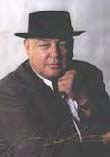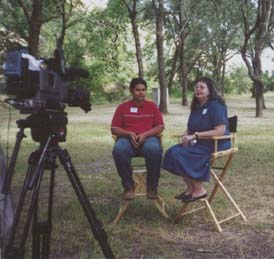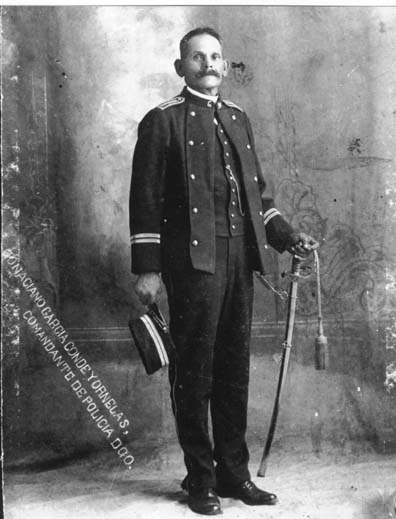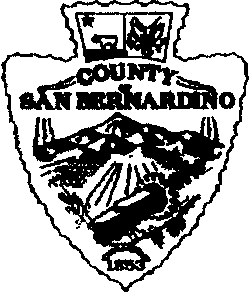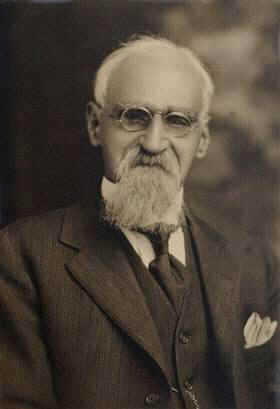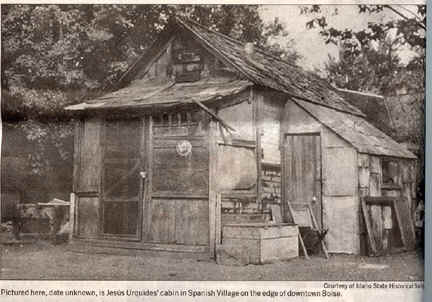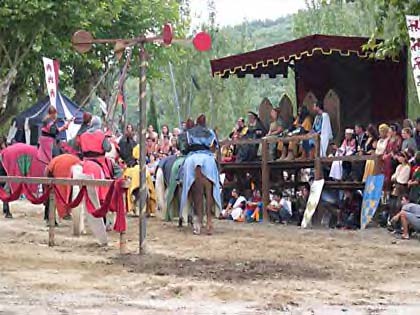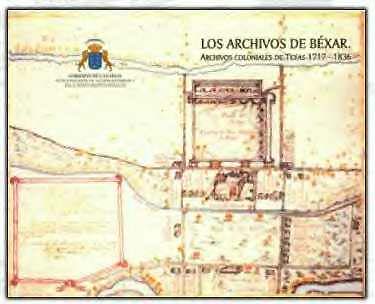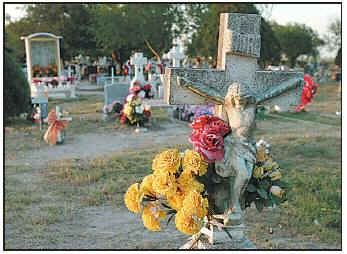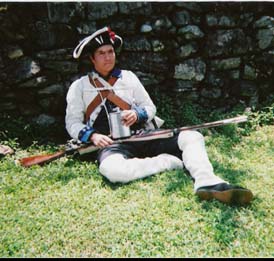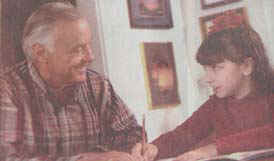|
|
REDISTRICTING IN CALIFORNIA:
FRACTURING THE CHICANO VOTE (1960-1984)
By John P. Schmal
|
The Chicano Population in 1960
In 1960, the Census Bureau reported that California had a total
population of 15,717,204 persons. This new figure increased California’s
representation in the U.S. Congress from 30 seats in 1950 to 38 seats.
Roughly 1.5 million Hispanics made up more than 9% of the California
population, but 20% of these Hispanics were foreign-born, many of whom
were not naturalized and, as a result, were not eligible to vote. In Los
Angeles, Latinos made up 9.6% of the population in 1960, slightly above
the African-American population of 7.6%.
But, as the new decade commenced, there were still no Chicanos in the
State Senate, the Assembly or in the California Congressional
delegation, primarily because of political fracturing.
"Fracturing" is the practice of drawing district lines so that
a minority population is broken up. Through fracturing, the voting
members of a minority are spread among as many districts as possible,
keeping them a minority in all the districts.
The 1961 Reapportionment
In 1961, with the 1960 census statistics as a guide, the California
Legislature reapportioned the Senate and Assembly pursuant to section 6
of article IV of the California Constitution. Testifying before the
Reapportionment and Elections Committees of the Senate and Assembly, Los
Angeles City Councilperson Edward Roybal, complained about the
fragmentation of the Chicano communities in L.A. He stressed the
importance of creating Hispanic districts.
Aside from the testimony of Councilperson Roybal, there was minimal
Chicano participation in the 1961 redistricting process. The longtime
Chicano political activist, Nell Soto, stated that this lack of Chicano
participation was due "to several factors, including Chicanos’
lack of awareness of the reapportionment process; the focusing of
Chicano interest on local rather than statewide issues; the absence of
Chicanos in the Legislature who might have informed the Chicano
community about the importance of redistricting; and more concern on the
part of Chicano activist to register Chicanos to vote than to create
Chicano districts."
And so it was that the East Los Angeles Barrio, with its large
population of Hispanics, was split up into six different Assembly
districts, seven State Senate districts, and six different Congressional
Districts. After the 1961 reapportionment was completed, Mexican
Americans represented significant populations in the following Assembly
Districts: the 40th, 45th, 48th, 50th and 51st Eastside Assembly
Districts. All of these districts fragmented the Chicano community and
were combined with neighboring Anglo communities so that Hispanic voters
rarely made up more than 20% of any one district's population.
The Chicano political researchers, Gilbert Lopez and Richard Martinez,
observed that the 1961 redistricting "seemed to have severed
Chicano communities and as a result rendered them incapable of forming
viable voting blocks by attaching them to areas that would prove to make
their vote meaningless."
The California Supreme Court later ruled that California's thirty-eight
congressional districts, as drawn in 1961, were unconstitutional.
Similarly, the Supreme Court also ruled that both California’s
Assembly and Senate would have to reapportion their districts.
In his study of the 1961 reapportionment, elections consultant T.
Anthony Quinn, Ph.D., wrote:
"Despite the state’s large Mexican-American population,
Mexican-Americans were not a political force at all. In 1960, not a
single federal or state office in California was held by a
Mexican-American. Spanish-speaking neighborhoods regularly returned huge
Democratic majorities, but they exerted no political power of their own.
Jesse Unruh and Robert Crown (the two Assemblymen chiefly responsible
for the 1961 plan) saw such Hispanic neighborhoods as putty, to be
shaped as necessary to maximize Democratic opportunities. The huge East
Los Angeles barrio would be divided among six Assembly Districts."
Although the redistricting of 1961 resulted in the continued
gerrymandering of the Latino community in the Los Angeles, one
congressional district was created that would pave a way for
Councilperson Ed Roybal to run for Congress.
The 1962 Elections
In the June 5, 1962 California Primary Election, thirteen Chicano
candidates ran for office. City Councilman Edward Roybal had announced
that he would run for the 30th Congressional District. Around the same
time, Henry Mendoza, a Republican, announced that he would run for the
21st District.
In addition, eleven Chicanos were on the ballot for the 40th, 45th,
48th, 50th, 51st and 77th California Assembly districts elections. In
East L.A.’s 48th District, Frank Lopez and Frank Paz had run against
each other in the primaries. Political analysts believed that Frank Paz
might have won that election if he had not faced another Latino in the
primary.
Of the thirteen Chicano candidates in California, only three men would
take office following the November 6, 1962 General Election. In the
primaries, John Moreno had faced three other Chicano Democratic
candidates in the contest for East Los Angeles’ 51st Assembly District
seat.
A native of Los Angeles, Moreno had attended USC and served in the U.S.
Navy from 1945 to 1947. Before running for his Assembly seat, John
Moreno served as the Mayor of the City of Santa Fe Springs. Once
elected, Assemblyperson Moreno would serve as the representative of the
51st District for only two years: 1963 and 1964.
Philip Soto, a Democrat from La Puente, was a veteran of the U.S. Air
Force and was a member of the La Puente City Council prior to his
service in Sacramento. He became the state representative for the 50th
Assembly District.
With their November 6 elections, Philip Soto and John Moreno became the
first two Latinos from Los Angeles County to be elected to the
California State Legislature in the Twentieth Century. They were also
the first Latinos to be elected to serve in the State Assembly since the
election of Miguel Estudillo of Riverside County in 1907. The election
of these two men set a precedent for a long line of Latino legislators
committed to the service of their communities.
While Soto and Moreno celebrated their Assembly districts, Ed Roybal
also savored his own victory. On November 6, 1962, after defeating
Loyola University Professor William Fitzgerald, the City Councilman
became the first Hispanic from California to be elected to Congress
since the 1879 election of Romualdo Pacheco.
Edward Roybal took his seat in the House of Representatives on January
3, 1963 at the start of the 88th U.S. Congress. He would serve for
twenty years from the 88th Congress to the 102nd Congress, retiring on
January 3, 1993. At the start of his Congressional career,
Representative Roybal represented the 30th District from 1963 to 1975.
From 1975 to 1993, he served in the 25th District.
As Ed Roybal prepared to run for Representative of the 30th
Congressional District, he resigned from his City Council seat on July
31, 1962. An African-American, Gilbert W. Lindsay, was appointed to
replace him on January 28, 1963, even though the 9th District had a
large concentration of Latinos. Lindsay would serve in this capacity to
Dec. 28, 1990, when he died in office. In three years, African Americans
went from having no representation on the Los Angeles City Council in
1960 to having three representatives in 1963. At the same time, Latino
representation went from two council members to zero.
The City Council apportionment of 1962 split East Los Angeles among
seven councilmanic districts. Because of this fragmentation, Chicanos
could not be a majority in any one of the city’s fifteen districts,
even though they represented a large portion of seven of the council’s
fifteen districts.
The 1964 Elections
In the June 2, 1964 California Primary Election, Ed Roybal received
49,151 votes in the 30th Congressional District, easily winning
reelection to his Congressional seat. According to the California
Statement of Vote for 1964, Roybal’s closest opponents received only
15,153 and 13,228 votes.
In the elections for the California Assembly, many Chicano candidates
stepped forward to seek a mandate for representing their communities. A
total of eleven Chicanos ran for the 10th, 38th, 40th, 45th, 48th, 50th
51st, and 75th Assembly District seats. However, by the time the
elections had ended, only one Hispanic Assemblyperson would take office.
In the 50th Assembly District, Philip Soto won reelection by 2,178 votes
in the general election. Two years later in 1966, however, facing the
same opponent in 1966, Soto would lose his seat by 4,309 votes,
apparently because of boundary changes to his district after the 1966
reapportionment.
When Assemblyman Moreno tried to get reelected to his 51st District
seat, he found himself up against another Chicano candidate, Dionisio
Morales. This contest split the Chicano vote and led to victory in the
Democratic Primary by Jack Fenton. Jack Fenton received 16,278 votes to
John Moreno’s 12,850 votes.
As 1965 began, only two Chicanos (Roybal and Soto) represented
California in Sacramento and Washington. The reality of Mexican-American
representation in the Golden State was still far from complete.
The 1965 Reapportionment
Because the California Supreme Court ordered the California
Legislature to reapportion itself in 1965, Governor Edmund
"Pat" Brown called a special session of the Legislature to
consider a revised reapportionment, and, in October, the California
Legislature passed Assembly Bill No. 1, which fashioned new Assembly and
Senate districts.
However, the 1967 California State Assembly and Senate
reapportionment continued the fracturing and dilution of the East Los
Angeles Chicano community, which was now split between ten Assembly
districts and seven Senate districts. Five Assembly Districts – the 40th,
45th, 48th, 50th, and 51st
– all dipped into East Los Angeles for 20-30 percent of their
registered voters, while five other Assembly Districts – the 52nd,
53rd, 56th, 65th and 66th
– all dipped in for smaller percentages.
Chicano analysts have studied the reapportionment of the mid-1960s
and speculated that the gerrymandering of East Los Angeles was designed
to benefit the Democratic incumbents in the Assembly. Democratic
Assemblymen were anxious to have portions of the heavily Democratic
Latino communities in their own voting districts. While incumbents were
pleased with this setup, most up and coming Chicano challengers were
unable to mobilize any serious threats to the men in power.
The 1966 Elections
In the 1966 California Primary Election on June 7, 1966, four
Hispanics ran for the 14th, 19th, and 29th
Congressional Districts, and all of them lost. Fifteen Chicanos also ran
for positions on the Assembly. All of these candidates, some of whom
opposed one another in the primaries, lost their elections. The one
Latino incumbent, Philip Soto, lost by 4,309 votes.
In addition, nine Latinos also ran for State Senate seats, the 9th,
10th, 27th and 28th and 30th.
Richard Calderón received the CDC and MAPA endorsements for his bid for
the 27th Senatorial District but lost by 311 votes. Cecilia
Pedroza and Raúl Morín had splintered the Mexican-American vote,
preventing Calderón from winning.
In his reelection bid for the 30th Congressional District,
Ed Roybal received 48,117 votes against the 22,347 votes of his
Republican opponent, Henry O’Bryant, Jr. This represented the only
bright spot for the cause of Chicano representation in the 1966 election
year.
Julian Nava’s Election (1967)
The election of Julian Nava in 1967 to the Los Angeles Unified School
District Board was significant in many respects. He was the first Latino
elected to the school board and he was able to defeat an incumbent in an
at-large election. His vote total, over two million, was actually the
largest ever received by a victorious Latino candidate in the United
States up to that time.
In an interview with the author, Julian stated that his election
"lit fires in many places" and "inspired the famous ‘Walk
Outs’ of the Los Angeles high schools in February of 1968, just seven
months after I took office." Julian explains that these walkouts
took place because "the students (and their leaders) believed that
for the first time their demands for reform might be met with one of
their own on the school board."
But Julian Nava’s surprise victory was one of the few events that
gave representation to Latinos during this period. The author, Richard
Santillan, in Chicano Politics: La Raza Unida explains that:
"After 1968, the Mexican-American… looked at the American
political system and found that the Mexican-American after almost 120
years of being an American citizen did not have any real political
voice. The Mexican-American tried to work in the two-party system, but
the system failed him. In 1968, the California Legislature did not have
one Mexican-American in the Assembly nor the Senate."
The 1968 Elections
By 1968, the California Legislature was once again without Latino
representatives. In the June 4, 1968 primary elections, 13 Latinos ran
for Assembly seats. Philip L. Soto once again ran for the 50th
Assembly seat again but lost one more time. By the time the elections
had ended, only one Chicano was given a ticket to enter the Assembly.
In the primary election for the 40th Assembly District,
the Democratic candidate Alex Garcia had faced twelve other candidates
in the primary election, including four Hispanics. Assemblyman Garcia
was a veteran of the U.S. Army and a graduate of UCLA and the Southern
California Business School. Before his election to the State
Legislature, Garcia was a field Representative for Congressman Ed Roybal
for five years.
A New Decade (the 1970s)
The 1970s represented new opportunities for Chicano candidates. The
beginning of true Hispanic representation would be established during
these years. Assemblyman García was the lone Latino in the California
Legislature at the beginning of 1970. However, in the June 2, 1970
primary election, three Republican Latinos ran for Congressional seats
in the 9th, 16th and 22nd Congressional
Districts. In addition, fourteen Chicanos also ran for Assembly seats in
the primaries, but only two men won.
In the primaries, Alex P. Garcia won reelection to the 40th
Assembly District by a wide margin, getting 15,151 votes out a total of
22,953. The Democrat Peter Chacón was elected as the representative for
the 69th Assembly District in San Diego County. After
receiving a bachelor’s degree, teaching credential and M.A. from San
Diego State University, Mr. Chacon worked as an educator and
administrator for the San Diego Unified School District.
The 1971 Reapportionment
In the 1970 census, the Chicano population of California was tallied
at 2,369,292. Although Latinos now made up 10.8% of the state’s total
population, their voting power was dramatically reduced by the presence
of 490,892 foreign-born Hispanics, who represented 22.9% of the total
Hispanic population. Many of these people were not citizens and were
therefore ineligible for American voting privileges. This represented a
significant stumbling block in electing Chicanos to public office.
On January 21 and 22, 1971, the California State Advisory Committee
to the U.S. Commission on Civil Rights held hearings in Sacramento on
the low level of political participation of Mexican Americans in
California’s political scene. Forty-two witnesses appeared before the
Committee to answer questions about the topic of Chicano political
participation.
The Committee later reported that, out of 15,650 elected and
appointed officials at the municipal, county, state, and federal levels,
only 310 (1.98%) were Chicanos. It was also reported that none of the
top forty state officials were Chicano, nor were any of the Governor’s
twenty-eight staff members. Furthermore, none of the 132 top state court
positions were held by Mexican Americans.
The Elections of 1972
The Elections of 1972 represented another step forward for the
political development of the Hispanic community of California. Richard
Alatorre and Joseph Montoya were elected from their respective districts
in Los Angeles to the California Assembly, while Ray Gonzales was
elected to represent his Bakersfield District.
Ray Gonzales, a Democrat, won a stunning victory against a veteran
Republic legislator in a bid for the 33rd Assembly District,
which took up most of Kern County, including Bakersfield, one of the
most conservative areas of the state. Gonzáles had graduated from Mount
San Antonio College and UCLA, and spent four years in the U.S. Air
Force. His career in elective politics began at the age of 28 with a
one-vote victory to the La Puente City Council in 1968. He later served
as Mayor of La Puente before his election to the State Legislature.
Richard Alatorre, a Democrat from Los Angeles, was elected to serve
as the representative of the 55th District to the California
Assembly. A native of East Los Angles, Alatorre was destined for a long
and tumultuous career in politics, sometimes breaking new ground for
Chicano lawmakers.
The Special Masters Plan
In 1972, the California Legislature had once again failed to draft
valid statutes to reapportion new legislative and congressional
districts in a fair and equitable manner. As a result, on August 31,
1973, a Special Masters Panel recommended its own reapportionment plan
to the California State Supreme Court. It was believed that this plan
would give Chicanos the opportunity to win two Senate seats and four
Assembly seats, all of them located in Los Angeles County.
On November 28, the California Supreme Court ordered the Special
Masters plan for the apportionment of California’s Assembly, Senate
and congressional districts. Before the passing of the Masters Plan,
there were five Assemblymen, one Congressman and no Senators who were
Chicanos. Seven years later, in 1980, there would be only a slight
increase to four Assemblymen, one Congressman, and three state Senators.
In an article entitled "Racial Politics and Representation:
Chicanos and Redistricting," Jay Rosenlieb analyzed the plan:
"The Special Masters’ plan managed to pack the bulk of the
Mexican-American population in Los Angeles County into just two Assembly
districts and to distribute the remainder of the county’s
Mexican-American population among 19 outlying districts. The court-drawn
plan thus effectively thwarted any hope for an increase in the number of
Mexican-American representatives in the state legislature. In the 1973
Special Masters’ plan for California, only two Los Angeles County
Assembly districts – the 55th and 56th –
contained Chicano populations of more than 45 percent, while 25 of the
30 Los Angeles County Assembly Districts contained Chicano populations
of less than 22 percent."
Chicano Legislative Caucus
In order to work for further political progress, the five Latinos now
serving in the State Legislature officially formed the Chicano
Legislative Caucus. The establishment of the Caucus marked a
significant turning point in the political empowerment of the Latino
community. For the first time in California's legislative history, an
agenda was established and legislative priorities were put forward to
protect and preserve the rights of Latinos throughout California.
Although four districts continued to be represented by Hispanic
delegates after the 1974 elections, one Chicano legislator lost his
seat. In the November 5, 1974 General Election, Ray Gonzales, the
Democratic Incumbent of Assembly District 33, was defeated by his
Republican opponent, Bill Thomas, by 38,611 to 33,094 votes.
In January 1975, Chicano representation in Sacramento amounted to
four members in the Assembly and two in the Senate: Senator Ruben S.
Ayala represented the 32nd District, while Alex P. García
served in the 24th District. In the Assembly, the four
representatives were Richard Alatorre (55th District), Art
Torres (56th District), Joseph Montoya (60th
District), and Peter Chacón (69th District). Two years
earlier, the Chicano Legislative Caucus had been founded in the hopes of
promoting the political empowerment of the Latino communities of
California.
Councilperson Snyder and East Los Angeles
In the Los Angeles City Council, Councilman Art Snyder continued to
represent East Los Angeles’ largely Latino Fourteenth District.
Serving since July 7, 1967, Arthur K. Snyder had held onto his position
by winning 11,514 votes (57.84%), while his opponents, David López Lee
and Edward Avila, won only 3,958 and 2,860 votes, respectively. Although
Snyder’s district was largely Hispanic, he held the support of many
Chicanos and maintained his base of power. As a result, no Latinos had
served on the Los Angeles City Council since Edward Roybal’s departure
in 1962.
During the 1972 reapportionment, Chicano political activists had
lobbied for the creation of two Hispanic Councilmanic districts, in the
hopes of giving that community a new voice in the Los Angeles City
Council. No Latinos had served on the Council since Edward Roybal’s
departure in 1962, this in spite of the fact that by 1970, Hispanics had
come to represent 18.3% of the total population of the City of Los
Angeles.
The pleas of Chicano activists were ignored by the Council, and
Councilperson Snyder was given representation of an Eastside district
that was 64% Hispanic. Snyder made the best of this situation by
learning Spanish and hiring an effective Latino staff to help him serve
his constituency. Although Snyder’s district was dominantly Latino, he
held the support of many Chicanos and maintained his base of power,
winning regular elections and surviving two recall votes until his
retirement in 1985.
Councilperson Snyder’s 14th District included the
communities of Boyle Heights, Lincoln Heights, El Sereno and Highland
Part, where significant numbers of Latinos lived. However, Snyder also
enjoyed the backing of a powerful block of conservative Anglo voters in
the Eagle Rock neighborhood. At election time, the support of Snyder’s
Eagle Rock constituency considerably outweighed the voting influence of
the other districts, which had larger numbers of non-voting immigrant
residents.
The 1978 Elections
In the 1978 Primary Election, Alex P. García won 32,377 votes
(71.9%) against four other Democratic opponents in his second race for
the 24th Senatorial District. Then came the General Election
of November 7, 1978: In the General Election, Alex P. García received
51,075 votes in the race for the 24th Senatorial District
against the Republican Loyal A. Weaver, who received 19,340 votes.
In the Primary election of 1978, Richard Alatorre won 13,743 votes,
winning 71.7% against his two Democratic opponents, Joseph R. Chavez and
Sally Acosta, in the battle for the 55th Assembly District.
In the General Election, Richard Alatorre easily defeated his Republican
opponent, John M. Feliz, by 27,081 to 18,510 votes.
In 1978, Joseph Montoya moved from the Assembly to the State Senate.
However, a Latino did not win Montoya’s Assembly seat in the 60th
District when he advanced to the State Senate.
In the 1978 Primary Election, Congressman Edward Roybal easily
defeated his Republican opponent, Robert K. Watson, by 38,699 votes to
11,289 in the battle for his 25th Congressional District. By
this time, Congressman Roybal had served his constituency for almost 16
years, having taken his seat in the House of Representatives in 1963.
In 1978, Senator Ruben S. Ayala was reelected to the 32nd
Senatorial District, putting together 79,837 votes, against John Ridley’s
48,415 votes. Art Torres won 17,582 votes in the primary election for
Los Angeles’ 57th Assembly District. In the 56th
Assembly District race, Art Torres won 23,086 votes against J. Raul
Blacksten’s 5,512 votes.
The 1980 Elections
In 1980, Matthew "Marty" G. Martinez, a Monterey Park
Councilman, was elected to the Assembly. Before entering politics,
Martinez ran an upholstery shop in Monterey Park. However in 1974, he
won election to the Monterey Park City Council. In 1980 Democratic
Primary Election, he defeated the 16-year incumbent, Jack Fenton, who
had initially defeated John Moreno. This victory was engineered with
money and support from Representative Howard Berman of Panorama City,
who had hoped to oust Fenton in order to win the Assembly Speakership. A
resident of Monterey Park in Los Angeles County, Martinez had been born
in Colorado and served as Mayor of Monterey Park for several years. The
political expertise and financial support of Berman was crucial in
bringing Martinez into the Assembly.
In the November 4 General Election, Richard Alatorre, the Democratic
incumbent for the 55th Assembly District of Los Angeles, won
33,819 votes (67.4%) against his two opponents. At the same time, Art
Torres easily won reelection to Los Angeles’ 56th Assembly
District, receiving 24,848 or 81.4% of the votes in his run against two
opponents.
Assemblyman Peter Chacón won reelection to the 79th
District (San Diego) with 42,844 votes (62.1%) against the Republican
Bailey, who received 25,447 votes (or 38%). In the 25th
Congressional, District, Roybal easily won reelection with 49,080 votes,
or 66% of the total in his race.
After the 1980 elections had ended, California Chicanos were
represented by two senators (Ayala and García), five Assemblymen (Alatorre,
Torres, Chacón, Martinez, and Montoya), and one Congressman (Roybal).
The 1982 Elections
The year 1982 became an important year for Chicano representation in
the State of California. The State Legislature, under the direction of
State Assemblyman Richard Alatorre, had reapportioned political
districts through the State. As Chairman of the Assembly’s
Reapportionment Committee, Alatorre had played an important role in
creating two new Latino Congressional Districts. As a result of this
reapportionment, two Latinos Marty Martinez and Esteban Torres were
elected to Congress and joined longtime U.S. Representative Edward
Roybal (D-Los Angeles), who had been the only Latino in the state's
congressional delegation since 1962.
In a special election on July 13, 1982, Marty Martinez, the
Democratic Assemblyman from Monterey Park (who had joined the Assembly
after the 1980 Assembly election), was elected as the Representative of
the 31st District to fill the vacancy caused by the
resignation of George E. Danielson (who had resigned to become an
appeals court justice). Martinez then defeated the Republican John
Rousselot, a Congressman who had lost his district through
reapportionment in a very heated campaign. Marty Martinez would
eventually be reelected to nine succeeding Congresses, serving from July
13, 1982 to January 3, 2001.
Esteban Edward Torres, the Democratic Assemblyman from La Puente, was
elected to serve as the U.S. Representative to Congress from California’s
newly created 34th District, which included the East Los
Angeles business district, Pico Rivera, Whittier and Santa Fe Springs,
and other environs of the San Gabriel Valley. He would serve in this
capacity to 1999.
State Senator Richard Alarcon, representing Sun Valley, was elected
to represent the 20th Senate District, which included the
greater San Fernando Valley. Alarcon, who narrowly defeated Assemblyman
Richard Katz in June's primary election, won the general election by
garnering more than 66 percent of the vote.
In the meantime, Montebello School Board member, Charles M. Calderon,
gained Martinez’s vacated Assembly position. Charles Calderon, a
Democrat from Alhambra, was elected to serve the 59th
Assembly District, which included Alhambra, Monterey Park, South El
Monte, Pico Rivera, Montebello and parts of South San Gabriel, Whittier,
El Monte and the City of Industry. Assemblyman Calderon would serve in
this capacity from November 1982 until April 1990, when he was elected
to the Senate to represent the 30th Senate District.
Also in 1982, Assemblyman Art Torres challenged the incumbent State
Senator Alex Garcia in a bitter primary battle for the 24th
Senate District and won. The 24th Senate District included
South Pasadena, East Los Angeles, Eagle Rock, Vernon, Maywood, Commerce
and Bell Gardens.
The Rise of Gloria Molina
Torres' vacant Assembly position itself produced a bitter battle.
Thirty-four-year-old Gloria Molina had put together an impressive resume
by working for various state and federal political causes. A native of
Montebello, Molina went to Assemblyman Richard Alatorre – who had
already become a powerful local political figure – and asked for his
endorsement in her campaign for the 56th Assembly District seat.
However, Alatorre had already picked his own candidate, Richard
Polanco, for the position. Spurned by the Eastside political
establishment, Gloria Molina took on their handpicked candidate for a
State Assembly seat and won, even against great political odds. In
defiance of the old-boy network, Molina defeated Polanco and would serve
in the State Assembly from 1982 to 1987, becoming the first Chicana
elected to the State Legislature and the first to hold a significant
elective position in Los Angeles County.
By the end of 1982, Chicano representation had increased
significantly from eight elected officials to ten. In Sacramento, Ruben
S. Ayala and Art Torres served as Senators, while five persons (Alatorre,
Chacón, Montoya, Molina and Calderón) had seats in the Assembly. At
the same time, the number of Chicano Congressman had increased from one
to three.
November 6, 1984 General Election
In 1984, all three Chicano Representatives to Congress were reelected
to their positions. Edward Roybal won reelection to the 25th
Congressional District with 74,261 votes (or 71.7%) against the Republic
Bill Bloxom and Libertarian Anthony G. Bajada. At the same time,
Representative Marty Martinez won reelection to the 30th
Congressional District, with 64,378 votes (51.8%) against his Republic
opponent, Richard Gomez, who won 53,900 votes (43.3%). Esteban Torres
also won the race for 34th Congressional District with 87,060
votes (59.8%) against his Republican opponent Paul R. Jackson, who
received 58,467 (40.2%).
Meanwhile, in the California State Assembly, Richard Alatorre won
reelection to the 55th Assembly District with 44,505 votes
(70.1% of the total). Charles Calderon, the Democratic Incumbent, won
reelection to the 59th Assembly District with 55,869 votes
(67.1%). Pete Chacón won reelection to San Diego’s 79th
Assembly District, winning with 52,898 votes (66.9%) against Shirley M.
Gissendanner’s 23,420 votes (29.6%).
In 1985, seven Chicanos were seated California State Legislature,
making up 6% of the total membership: Chacón, Alatorre, Calderon and
Molina in the Assembly, and Joseph Montoya, Ruben Ayala, and Art Torres
in the Senate. In the meantime, three Chicano Congressman continued to
serve as delegates from California in the House of Representatives.
As California moved into the second half of the decade, Federal
agencies and Chicano activists in Los Angeles began to chronicle a
continuing practice of discrimination against the Latino community with
regards to reapportionment. At the beginning of 1985, no Latino sat on
either the Los Angeles City Council or the County Board of Supervisors,
even though the Latino population of Los Angeles County had been tallied
at 27.6% in the census five years earlier. Starting in 1985, a series of
events would take place that would bring a great balance to the
representation of Hispanics in both Los Angeles and the State of
California.
Sources:
Mexican American Legal Defense and Educational Fund and William C.
Velasquez Institute, "California Congressional Redistricting
Plan" (Submitted July 17, 2001, Los Angeles). http://www.maldef.org/publications/pdf/Congressional_Plan_Supplement.pdf
Political Participation of Mexican Americans in California,
Report of the California Advisory Committee to the United States
Commission on Civil Rights (Sacramento, Calif., August 1971).
Jay Rosenlieb, "Racial Politics and Representation: Chicanos and
Redistricting," Claremont Journal of Public Affairs, Vol. 7
(Summer 1980), p. 44.
Richard Santillan, "California Reapportionment and the Chicano
Community: An Historical Overview 1960-1980," in The Chicano
Community and California Redistricting, Vol. I (Rose Institute of State
and Local Government, Claremont Men’s College, 1981.
Richard Santillan, Chicano Politics: La Raza Unida (Los Angeles:
Tlaquilo Publications, 1973).
|
